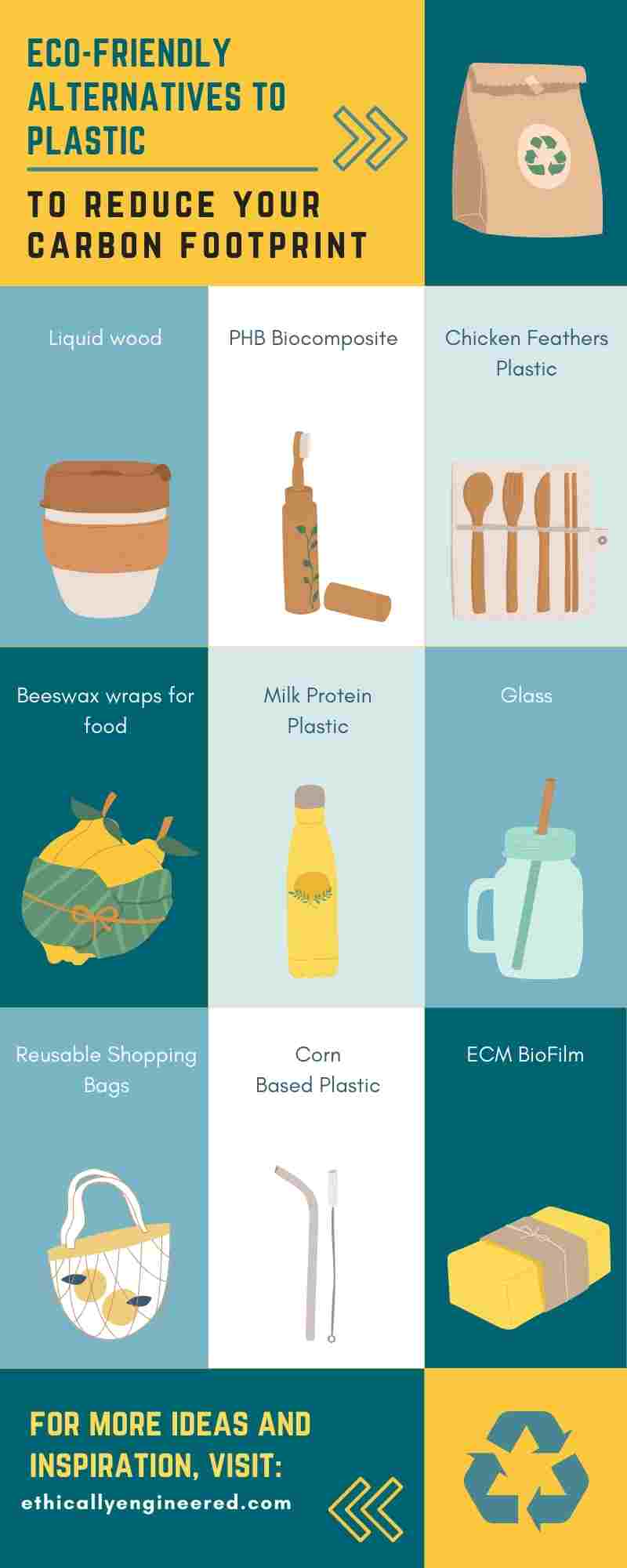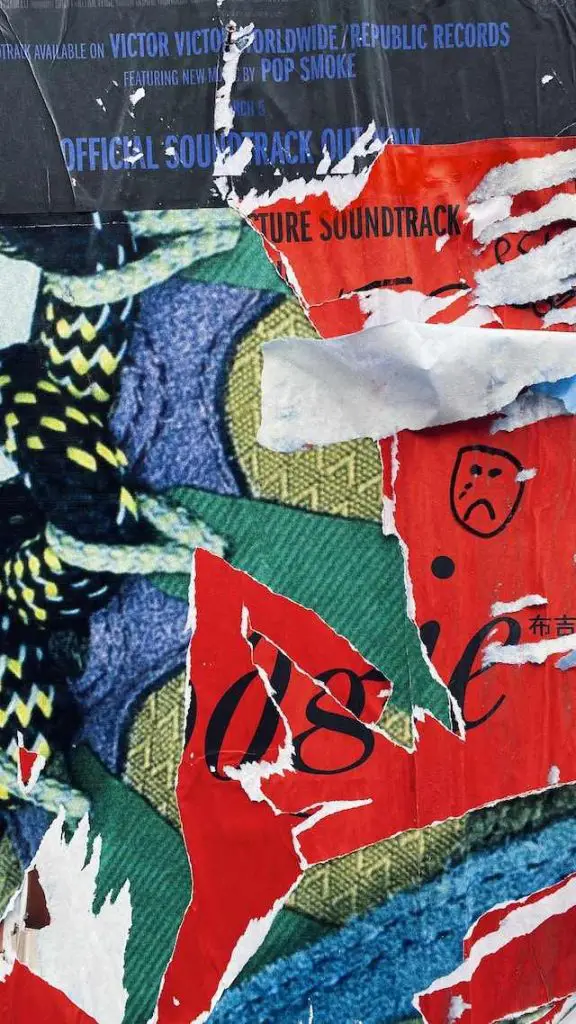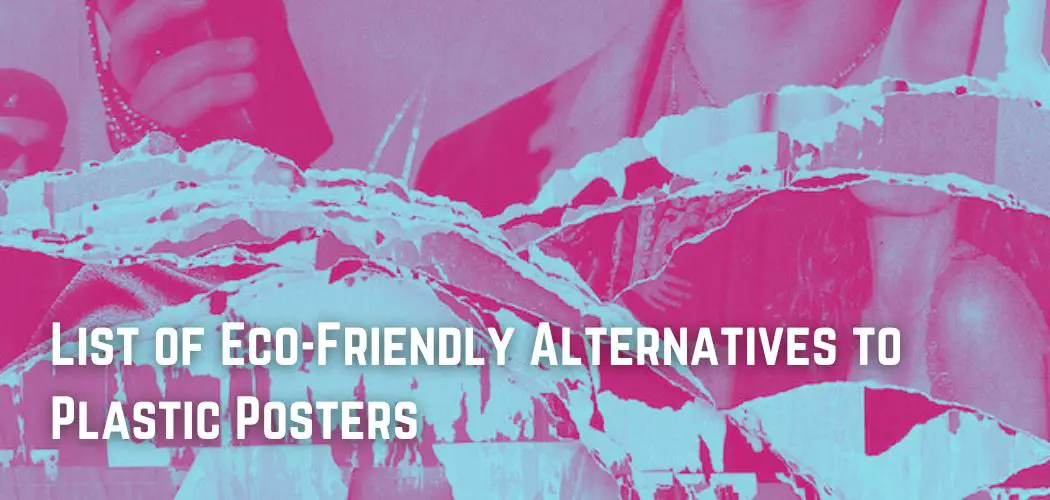Plastic is resistant to decay and breakdown thus winds up cluttering landfills and polluting the environment, in addition to posing health risks.
In addition, the water is littered with garbage. Many scientific studies throughout the world are focused on finding the ideal alternatives to plastic.
Here are nine such environmentally beneficial and sustainable alternatives to plastics that might assist our planet.
In the near future, these 9 alternatives can be used to make plastic posters!
Here is our Infographic, feel free to use it but do let us know if you do!

Chicken Feathers
Chicken feathers, another source of pollution, will be used to make a waterproof thermoplastic in the near future. The protein keratin contained in these feathers can help polymers retain their strength and lifespan.
In comparison to traditional plastic, this sustainable plastic is more durable and less prone to ripping, and it is totally biodegradable.
Milk Protein
According to research, milk protein can be used to make biodegradable plastic. This plastic can be used in furniture cushions, insulation, packaging, and other items.
This is simple to do if casein, a milk protein, is converted into a polymer with the stiffness and compressibility of polystyrene. This milk-based plastic is less prone to breaking and is manufactured with glyceraldehydes rather than formaldehyde.
Corn
Corn-based plastic is a great substitute for traditional harmful plastic. This corn-based substance is known scientifically as polylactides (PLA). It has the ability to degrade in 47 days without producing hazardous odours when burned. This plastic may be used to make containers and consumer items. PLA, on the other hand, has a few drawbacks.

To begin, it is created by genetically altering and mutilating maize. This is a health and environmental threat, and it may take longer to disintegrate as well. Along with normal plastic, corn plastic kitchenware and mugs are popular.
This is incorrect since it is needed to keep them separate in order to distinguish them. Some environmentalists argue that diverting corn to plastic manufacture will reduce the amount of corn available for normal eating.
Glass
Sand, which can be replenished, is used to make glass. The majority of bottles were made of glass a long time ago. Glass was used in everything from milk bottles to infant feeding. However, because of its sturdiness and low weight, glass has lost its way to plastic in recent years.
Glass is a non-toxic, recyclable material. It is prone to shattering, but the losses are well worth it.
Liquid wool
Liquid wool is a new bioplastic that looks and feels like plastic but is biodegradable and composed of lignin. It is one of the underappreciated green plastic alternatives. Because lignin is derived from wood pulp, liquid wool is derived from a sustainable resource.
Lignin is mixed with paper mill wastes and water, then heated to make a moldable plastic that is both strong and non-toxic. Toys, golf tees, and high-quality speaker enclosures may all be made using this material.
Liquid wood
Liquid wood is a byproduct of paper mills and is another ecological alternative to plastic. It has a promising future as a novel biopolymer or bioplastic. If you felt the substance formed by liquid wood, you wouldn’t be able to tell the difference between the two, with the exception that liquid wood is completely biodegradable.

To develop biopolymers, you’d need to combine lignin (a byproduct of paper mills) with water, then subject it to high pressure and temperature to create a composite material that can be moulded like plastic.
Researchers in Germany have used this biopolymer to create a variety of goods, including golf tees, toys, and other items. Previously, the majority of lignin was burned as fuel, but it now has a lot of potential as a powerful green alternative to plastic.
ECM BioFilm
ECM BioFilms Inc. has developed a ground-breaking technology that allows plastic to be biodegradable, which is hard to believe! Making plastic using ECM’s addition as a component would modify the material’s makeup by making it biodegradable.
Although ECM’s plastic has a lengthy shelf life, it will disintegrate and break down fully in 9 months to 5 years when deposited in the soil. This idea may be used for a variety of things that now clog landfills, such as garbage bags, diapers, and containers. This technological study is currently ongoing.
Reusable Shopping Bags
Plastic shopping bags and carry bags are ubiquitous and may be found at any store. Only a small percentage of these bags are recycled, while the vast majority wind up in landfills or, in the worst-case scenario, in the ocean.
As a result, they poison the land and water, resulting in the extinction of thousands of animal and plant species each year. The greatest strategy to reduce the usage of plastics is to utilise reusable shopping bags, woven plastic fibre, hemp, cotton, and leather. This would avoid the accumulation of plastics.
PHB Biocomposites
A PHB biocomposite is a bacterial-based substance. It’s progressively establishing itself as the new and ideal biodegradable foil. This substance is essentially an improved variant of PHM, a byproduct of spontaneous bacterial fermentation.

It looks a lot like the synthetic polypropylene manufactured by humans. Although less flexible than plastic, this biodegradable material has many applications in the biomedical, packaging, and agricultural industries.




